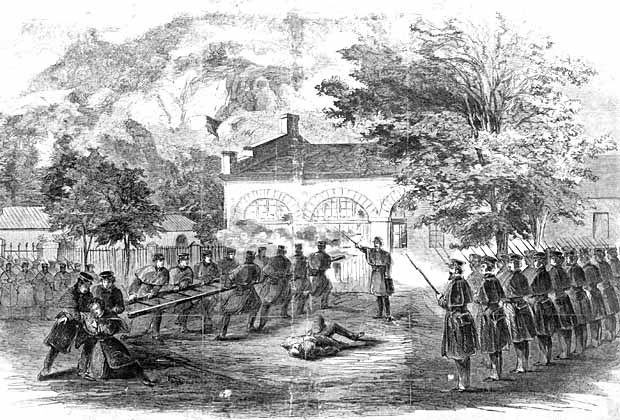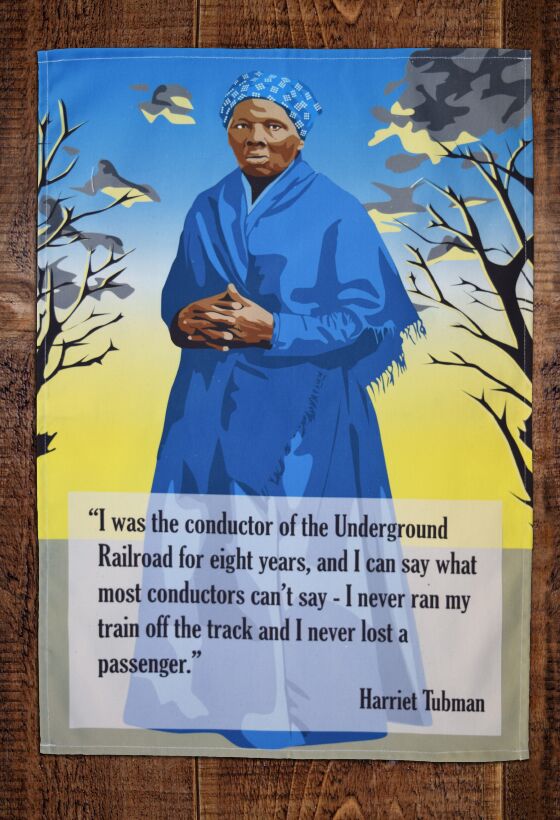Abolition Through Uprising: John Brown's Raid and the Fight for Freedom
Posted by Pete on Oct 18th 2019
Two years before the outbreak of the Civil War, John Brown and his followers attempted to lead an armed slave revolt by taking over a US military arsenal at Harpers Ferry, West Virginia. Even in defeat, their story reminds us why history needs radicals.
Thomas Jefferson once said:
“The spirit of resistance to government is so valuable on certain occasions that I wish it to be always kept alive."
There are few occasions in American history where this spirit of rebellion has been channeled with as much bravery and righteous courage as it was in October 1859, in Jefferson's home state.
It was here, 160 years ago today, that a band of radical abolitionists led by John Brown launched their raid on Harpers Ferry.

John Brown's raid on Harpers ferry was a bold step in the fight for freedom
An attempt at abolition: John Brown's raid
Harpers Ferry was a US army facility in Virginia (now West Virginia), king of the slave states.
It contained maybe 100,000 guns.
Looking to Harpers Ferry in 1859, a band of radicals from the North hatched a daring plan.
Led by the white abolitionist, John Brown, they would seize Harpers Ferry by force, prompting slaves on the local Virginian plantations to rise up.
Then, with the guns from the armoury, this band of rebel slaves and abolitionists would march south into the heartlands of American slavery, adding to their ranks with every plantation they set free.
In a matter of months, John Brown and his comrades hoped, slavery would be brought down by African-American slaves themselves in an uprising the likes of which hadn’t been seen since Haiti's liberation from the French Empire in 1804.

Hot off the press! Our new John Brown tea towel has just arrived in the US
The fight for freedom
On this occasion however, it wasn’t meant to be.
Already in the weeks before the raid, cracks were beginning to show.
Brown's band of 22 rebels – recruited with the help of fellow abolitionists such as Harriet Tubman – consisted of a combination of free black men, freed slaves, white abolitionists, and one fugitive slave.
But many other influential abolitionists refused to support what Frederick Douglass described as a "suicide mission", and the raiders also fell out with their military instructor (a veteran of Garibaldi’s wars to liberate Italy).
Upon finally launching the raid, Brown and his followers managed to briefly seize the armory at Harpers Ferry – forcing President James Buchanan to summon the US Marines.
Brown and his men somehow held out for three days despite being outnumbered 10:1 by a force of Marines led by future Confederate warlord Robert E. Lee, but he was ultimately captured on this day, 18th of October, 1859.

Brown's raid and the path to abolition
Later that winter, John Brown, wounded and imprisoned, was executed in Charles Town, Virginia.
But even though the forces of slavery may have won the battle at Harpers Ferry, they would lose the coming war.
Despite his prior disagreements with other anti-slavery activists over the raid, Brown's trial and subsequent execution transformed him and his fellow rebels into martyrs for the abolitionist cause.
Six years after Brown's raid on Harpers Ferry, slavery in the United States was officially abolished.
The Harpers Ferry raiders had taken the fight to the institution of American slavery when it was most dangerous to do so, with defeat almost guaranteed.
As Tubman said upon Brown's execution, at the hands of the same state that continued to keep more than 3 million human beings in chains: "He done more in dying, than 100 men would in living."
